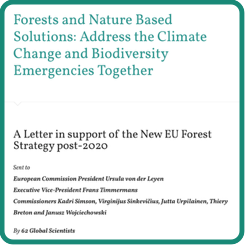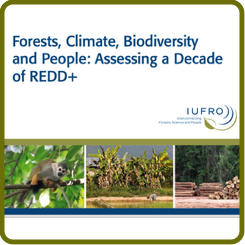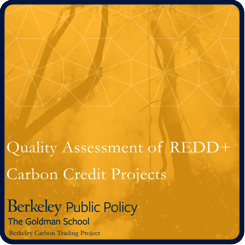
🔝
🔝
Institutions ~ International initiatives
BioCarbon Fund Initiative for Sustainable Forest Landscapes (ISFL)
· "A global effort to bring 150 million hectares of deforested and degraded land into
restoration by 2020 and 350 million hectares by 2030."
Forest & Climate Leaders' Partnership (FCLP)
Lowering Emissions by Accelerating Forest finance (LEAF) Coalition
TreeWatch.net (Tree Water and Carbon monitoring Network)
Institutions ~ REDD+
· REDD+ stands for Reduction in Emissions from Deforestation and Forest Degradation
(+ represents sustainable forestry)
UN Framework Convention on Climate Change (UNFCCC)
Warsaw Framework for REDD-plus
CIFOR Global Comparative Study on REDD+
Forest Carbon Partnership Facility (FCPF) @ World Bank
· "The Global Canopy Programme’s Internet platform – the REDD Desk – was launched
in late 2009 as a centralised and collaborative knowledge platform to disseminate
information on REDD+ readiness."
REDD+ @ Wikipedia
REDDX: Tracking Forest Finance @ Forest Trends
Germanys REDD Early Movers (REM) Programme
Governors Climate & Forests (GCF) Task Force
Norways International Climate and Forest Initiative (NICFI)
Select readings on forests & climate change
· In reverse chronological order
· 2022 ~ Louis König et al. ~ Forest Ecology and Management
· Europe's forests are becoming effected by climate change sooner than hypothesized
· Regeneration of forests comprises the largest potential to adapt to the changing environmental
conditions, but young forests are especially sensitive to climate change
How do REDD+ projects contribute to the goals of the Paris Agreement?
· 2022 ~ Atmadja et al. ~ IOP Science
· REDD+ projects would need to be upscaled >40 of numbers to fulfill the potential contribution of
tropical and subtropical forests towards limiting global warming to <2 C. Peru and Indonesia finds
divergence between carbon accounting parameters used at the national and project scale.
· As part of the Paris Agreement, countries should improve their accounting practices to eliminate
double counting across accounting scales. This implies harmonizing carbon accounting methods
with REDD+ projects and avoiding a perpetual game of catch-up between different scales.
· REDD+ projects are first movers: they act early, take financial risks, follow standards, and access
financing from the private sector in the voluntary carbon market.
How trees and forests reduce risks from climate change
· 2021 ~ Lisa Palmer ~ Nature Climate Change
· New forests capture substantial amounts of carbon
· Regrowing forests is a low-cost way to effectively reduce the impacts of climate change
· By ensuring that appropriate tree species are used in reforestation, harm to these ecosystems can be reduced
Characterizing forest vulnerability and risk to climate-change hazards
· 2021 ~ Judit Lecina-Diaz et al. ~ Frontiers in Ecology and the Environment
· Presents a general framework based on hazard magnitude, widely used concepts of exposure,
susceptibility, and lack of adaptive capacity for evaluating risk of forests
· Wildfires, drought, pests, and windstorms are the four primary climate change related hazards to forests
Climate Finance Thematic Briefing: REDD+
· 2020 ~ Charlene Watson & Liane Schalatek ~ Climate Fund Update
· REDD+ has the potential to significantly reduce emissions, but securing financing has been difficult
due to issues related to MRV and concerns around land tenure and governance.
· Various sources of finance for REDD+ include public, private, and innovative finance mechanisms,
but financing needs to be aligned with national development priorities and strategies.
· International cooperation is crucial in supporting REDD+ financing, and developed countries need
to fulfill their commitments to provide financial support to developing countries.
The global tree restoration potential
· 2019 ~ Bastin, et al. ~ Science
· Earth has room for an additional 0.9 billion hectares of canopy cover, which could potentially store
205 gigatons of carbon and help mitigate climate change.
· Six countries, including Russia, the United States, Canada, Australia, Brazil, and China, were identified
as having the greatest potential for tree restoration, with over 50% of the potential restoration areas
located in these countries.
· Prioritizing restoration efforts in areas that can provide the most benefits, such as improving biodiversity,
enhancing ecosystem services, and supporting local communities.
Capturing complexity: Forests, decision-making and climate change mitigation action
· 2018 ~ M.J. Klapwijk et al. ~ Global Environmental Change
· Managed forests are important carbon sinks but harnessing their full potential has proven to be difficult.
· Identifies the main research areas concerned with managed forests in terms of climate change
mitigation and the obstacles involved in decision making.
· 2017 ~ Klaus Katzensteiner, et al. ~ Journal of Applied Ecology
· Disturbances are climate sensitive and will intensify with the increasing climate changes
· Increasing disturbance frequency and severity in temperate forests can be positive for biodiversity
but increasing the disturbance size has a negative effect.
Forest Disturbance Under Climate Change
· 2017 ~ Seidl, et al. ~ Nature Climate Change
· The effects of climate change, including fires, insect outbreaks, and drought, have a potential impact
on forest disturbance and subsequent effects on forest ecosystems and their associated services.
· Developing effective management strategies that can promote the resilience of forest ecosystems is crucial.
· Adaptive management approaches are important for responding to changing conditions and uncertainties
associated with future climate change.
Climate change impacts and adaptation in forest management: A review
· 2017 ~ Rodney J.Keenan ~ Annals of Forest Science
· Climate change is already affecting forests and is likely to have increasingly significant impacts in the future.
· Forest managers will need to adapt their practices to address these changes using a range of strategies.
· Effective forest management adaptation requires ongoing research and monitoring, as well as
consideration of the social and economic implications of management decisions.
Carbon sequestration: Managing forests in uncertain times
· 2014, Valentin Bellassen & Sebastiaan Luyssaert, Nature
· More research is needed on how carbon sinks in forests work in order to determine whether we should harvest or conserve trees.
· Until this information is certain, forestry management should prioritize both increasing stocks of timber and natural forest.
· Techniques to be implemented include planting more resilient trees, protecting young sprouts,
and optimizing fertilizer youth to manage tree growth.
Adapting forestry and forests to climate change: A challenge to change the paradigm
· 2012, Dieter H.F. Schoene & Pierre Y. Bernier, Forest Policy and Economics
· Climate change will inevitably alter forest ecosystems, increase the risk of forest disturbances,
allow for new gaps in knowledge to emerge, and increase the worth of forest carbon.
· Planned adaptation of forests, including changes in the legislature, in human behavior, and in
organizing is needed to deal with the effects of climate change.
Forests and Climate Change: Forcings, Feedbacks, and the Climate Benefits of Forests
· 2008, Gordon B. Bonan, Science
· The world's forests' interactions with the atmosphere can either increase or diminish the effects of anthropogenic climate change.
· Forests are able to store a large percentage of terrestrial carbon in the form of carbon sequestration.
· The ability for forests to sequester carbon goes down as temperatures rise with global warming.
Managing Forests for Climate Change Mitigation
· 2008, Josep G. Canadell, Science
· Reforestation is required in order to mitigate anthropogenic carbon emissions.
· Looks at how carbon density and an increase in forest biomass can be increased to mitigate carbon emissions.
· Discusses the economic potential of preventing deforestation and increasing the capacity of forests to store more carbon.
The Role for Sustainably Managed Forests in Climate Change Mitigation
· 2007, Steven Ruddell et al., Journal of Forestry
· As a result of the U.S. not ratifying the Kyoto Protocol, forests are not able to act collectively as
an international greenhouse gas emission offset project.
· The U.S. needs to develop national standards for the registration and trading of forest carbon sequestration projects.
· Sustainably managed forests are able to sequester more carbon over time than unmanaged forests.
Contents of this page:
· Institutions:
~ International initiatives
~ Reducing Emissions from Deforestation & Forest Degradation (REDD+)
· Select readings on forests & climate change
Also see:
· Climate change & forests @ USA forests
This page focuses on the effects of climate change on forests as well as forest carbon sequestration, which
includes coverage of REDD+. Many—if not most—of the resources listed on the Forests page (particularly
International agreements & declarations) contain extensive focus on "climate change & forests" as well.
Forests & climate change (including REDD+)
This page focuses on many forms of forest carbon sequestration, including:
· Reforestation: "planting trees
or entire forests on terrain
that used to contain them"
· Aforestation: "the process of
planting trees, or sowing
seeds, in a barren land devoid
of any trees to create a
forest"
· Proforestation: "growing
existing forests intact to their
ecological potential"
Mia Levine & Kai Tang (2023) and Karalyn Morin (2022) of Brandeis University contributed to this page.




